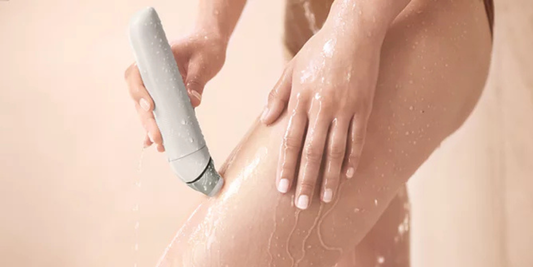
5 Sensitive Skin Issues to Avoid When Shaving
If you have sensitive skin, shaving can feel like navigating a minefield. One wrong move and you're dealing with redness, irritation, or worse. Understanding what to avoid is the first step toward achieving smooth, healthy skin without the discomfort.
1. Using Dull or Dirty Razors
A dull blade is your skin's worst enemy. When razors aren't sharp, you're forced to apply more pressure and make multiple passes over the same area, causing friction and micro-tears in the skin. Add bacteria from an unclean razor, and you're setting yourself up for infected hair follicles and breakouts.
The fix: Replace blades regularly and rinse your razor thoroughly after each use. For electric shavers, choose models with antimicrobial heads and easy-clean designs that prevent bacterial buildup.
2. Shaving on Dry Skin

Shaving dry skin is one of the fastest ways to cause irritation. Without adequate moisture, the razor drags across your skin, leading to razor burn, redness, and that uncomfortable tight feeling afterward.
The fix: Always prep your skin with water first. The best time to shave is after a warm shower or bath when your pores are open and hair is softer. Use a quality shaving gel or cream formulated for sensitive skin to create a protective barrier.
3. Shaving Against the Grain
While shaving against the direction of hair growth might give you a closer shave, it's a recipe for disaster if you have sensitive skin. This technique increases the risk of ingrown hairs, razor bumps, and folliculitis—especially in delicate areas like the bikini line.
The fix: Shave in the direction of hair growth. If you want a closer result without the irritation, invest in a high-quality shaver designed specifically for sensitive skin that can deliver smoothness without requiring you to go against the grain.
4. Skipping Post-Shave Moisturizer
Your skin needs recovery time after shaving. Skipping moisturizer leaves your skin vulnerable to dryness, flaking, and prolonged irritation.
The fix: Immediately after shaving, apply an alcohol-free, fragrance-free moisturizer or soothing lotion. Look for ingredients like aloe vera, vitamin E, or chamomile that calm and hydrate sensitive skin.
5. Shaving Too Frequently
Daily shaving doesn't give your skin enough time to heal between sessions. This constant trauma can lead to chronic irritation, rough texture, and a compromised skin barrier.
The fix: Give your skin at least 1-2 days between shaving sessions. If you need to shave more often, consider upgrading to a premium shaver designed for sensitive skin with friction-reducing technology that minimizes irritation.

Conclusion
Caring for sensitive skin while shaving doesn't have to be complicated. By avoiding these common mistakes and choosing the right tools and techniques, you can achieve smooth, irritation-free results every time. Your skin will thank you.

